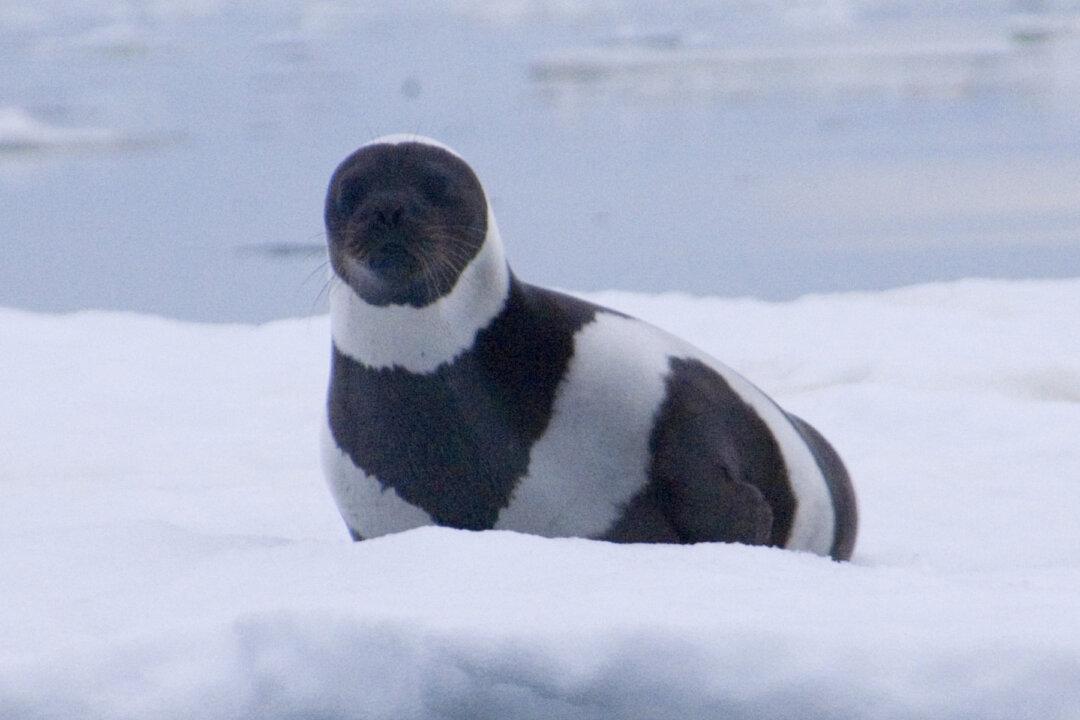A remarkably rare ribbon seal that sports distinctive black and white stripes is not just any regular visitor at your favorite beach, and sighting this unique-looking mammal is nothing less than a once-in-a-lifetime opportunity.
Ribbon seals—scientific name Histriophoca fasciata—are claimed to be “the most striking and easily recognizable seals in the world,” according to NOAA Fisheries Service. They are highly distinctive due to their four broad bands of white fur around the neck, tail, and on each side of their bodies.






